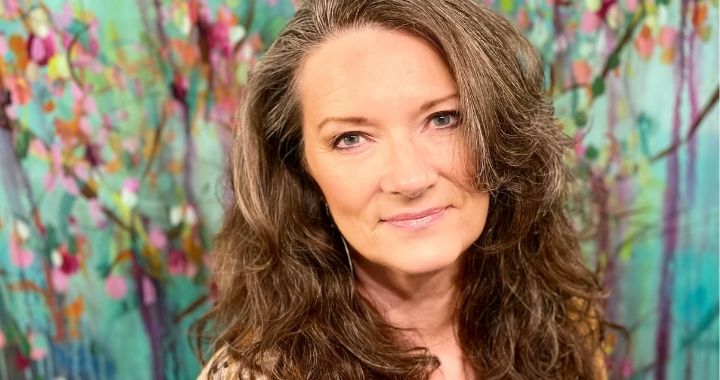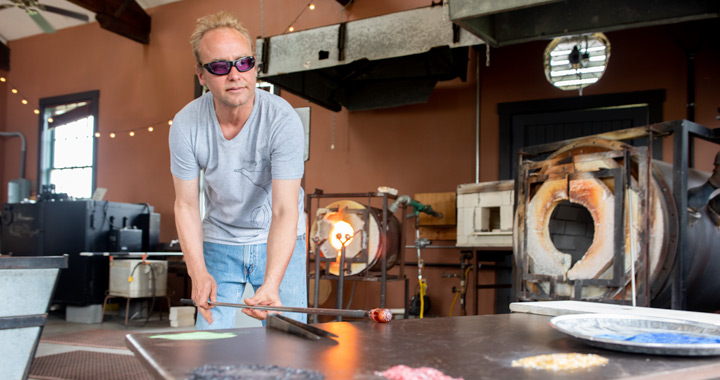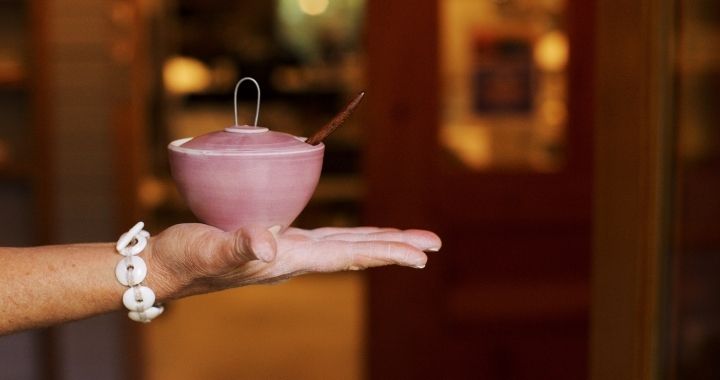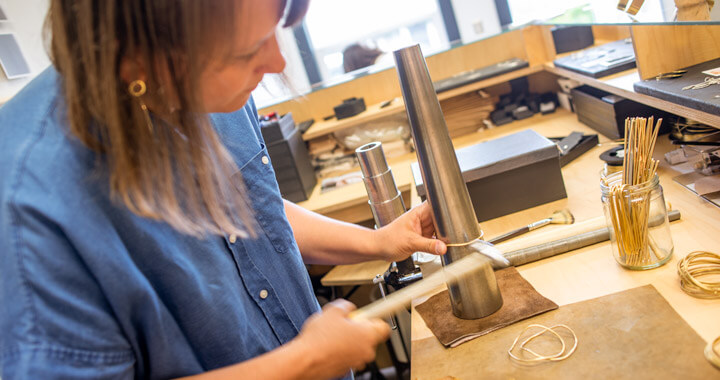Zackarya Leck, Orcas Island Artist-Blacksmith
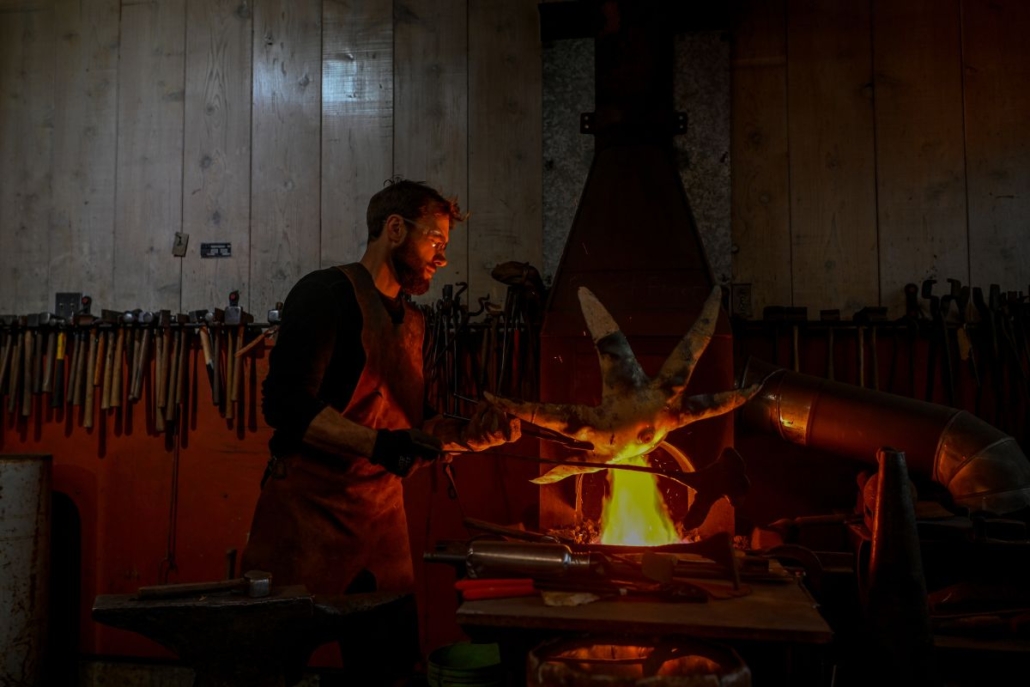
On the western horseshoe of Orcas Island, where the cell service is spotty and the rolling farmland is studded with forest groves and rainwater ponds, Zackarya Leck turns iron to playdough in his 2,000-degree forge. A bespoke blacksmith, his weathered hands coax salvaged junkyard scraps into new forms — some functional, some sculptural, all stunning.
His work can be found as far east as Maine and as high as the Colorado Rockies. However, the bulk of his mastery is scattered throughout Orcas Island among large public art installations and private homes. Most prominent are Zackarya’s 70-foot kelp-inspired sculpture, installed at the Orcas Island Ferry Terminal, and his slide that is part of the Playground-on-the-Green at the heart of Eastsound.
Both installations speak to the primal nature of Zackarya’s work, a rich mixture of hard iron and thoughtful creativity. It’s a juxtaposition that he comes by naturally – blacksmithing and arts run deep in his roots. His father, Andrew Leck, is a self-taught blacksmith and his mother, Phyllis Leck, is a weaver and textile artist.
Returning Home & Fostering Future Artisans

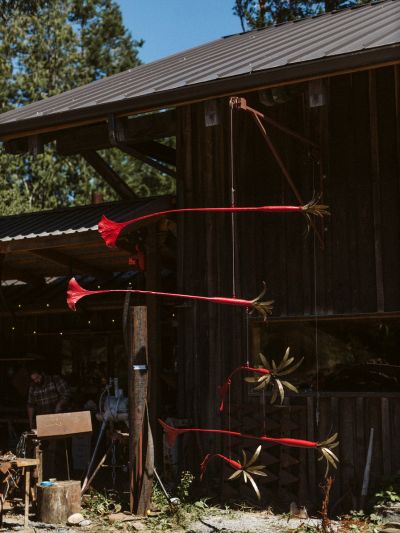
Born on Orcas in 1979, Zackarya began learning about metal and fire at an early age, watching and eventually assisting his father in the shop. He is continuing this tradition by teaching his children, Zora, Sterling, and Colm. (He and his wife Caitlin are raising their three children just down the road from his studio, allowing the family to visit often).
Zackarya traveled widely as he studied blacksmithing. He attended Hereford College of Arts in the United Kingdom, the most prestigious blacksmithing college in the world. His formal schooling was followed by apprenticeships under master smiths in the UK and Israel.
Returning to Orcas in 2001, he continued the apprentice tradition, passing down his experience to younger blacksmiths. Among Zackarya’s current apprentice team are Emmett Pearsons and Kiel Sloper. A budding blacksmith in his own right, Emmett’s eight-plus years of experience with Zackarya are accentuated by his deep passion for the science of blacksmithing. The newest member of the team, Kiel began lending a useful hand here and there, eventually earning a permanent position.
Forged in the Landscape
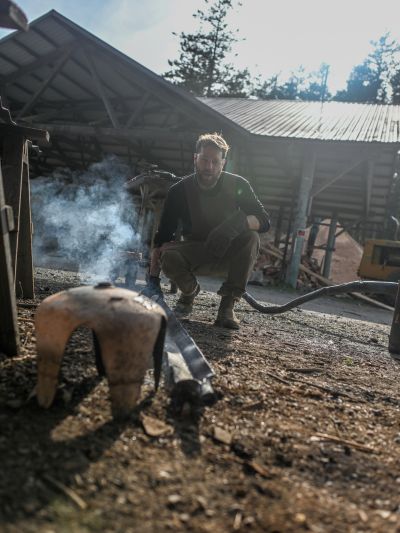
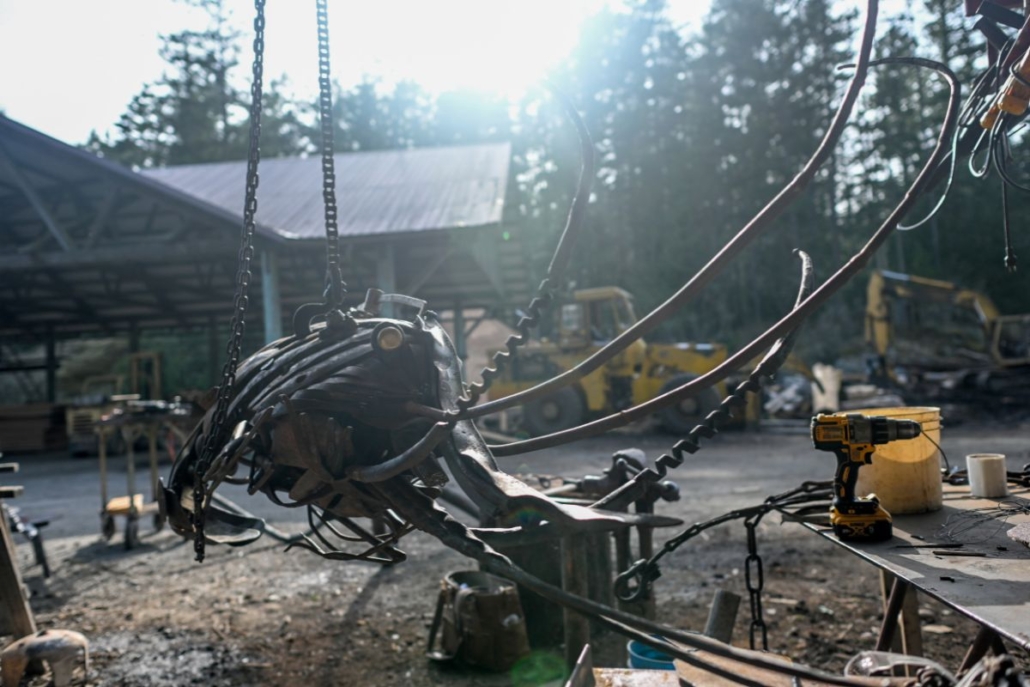
The team works from Zackarya’s studio, a space that has housed generation after generation of island smiths. It rests tucked at the foot of Turtleback Mountain, bordered by one of the island’s historic sawmills and flanked by grassy fields where horses graze.
The space itself is a veritable maze of metal pieces, old machinery, and glowing fires. Hammers of varying sizes are scattered across the floor and on top of workbenches. An antique lathe salvaged from a World War II warship sits across from giant saws. Rusty buckets of water are positioned in corners for quickly cooling hot metal.
It’s messy work, filled with smoke and steam and glassy scale, a flaky filament that forms on the metal when it’s placed in the forge. Zackarya and his team use wire brushes to remove the scale, effectively cleaning the metal.
And the men here are completely at ease. They move in a steady rhythm, following Zackarya’s lead in a series of quick words, subtle hand movements, and head nods.
Transcending the Term Blacksmith
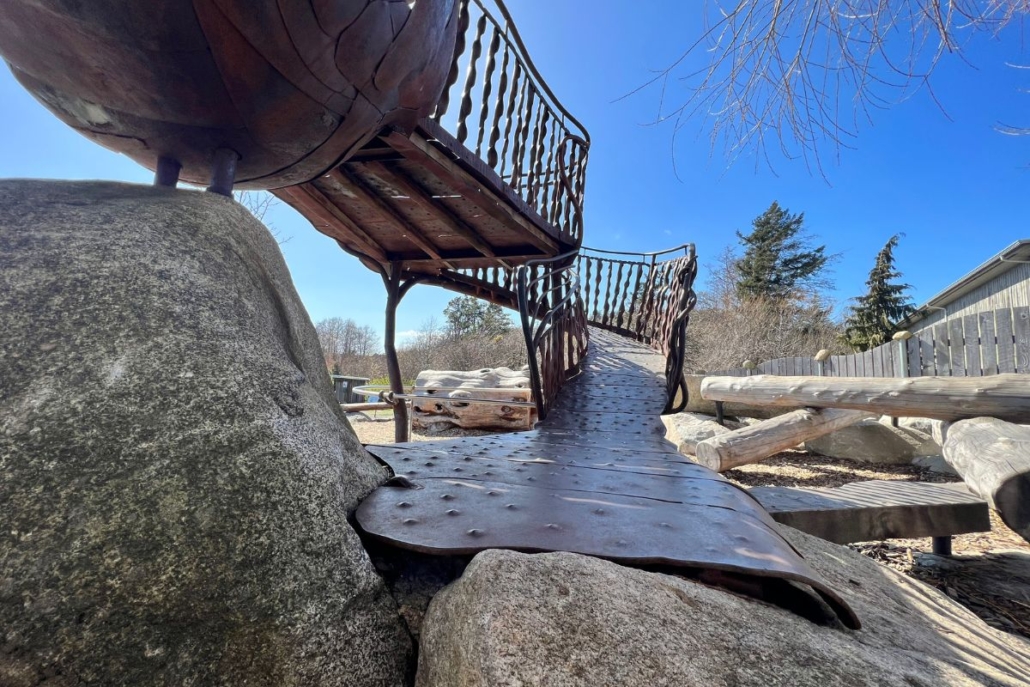
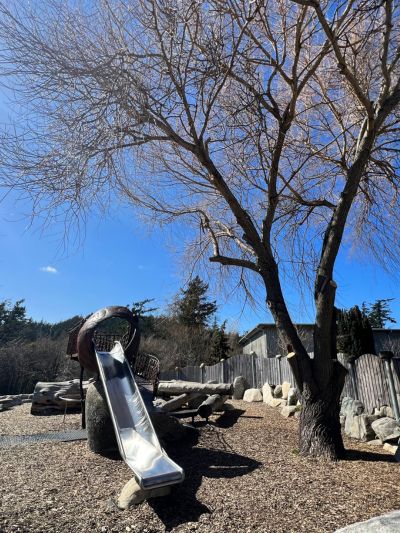
For many, the term blacksmith brings to mind a man giant forging weapons and shaping horseshoes. And there’s some truth behind the stereotype — it takes a good deal of strength to reshape iron. Plus, the earliest evidence of smithing was indeed a weapon, an iron-shaped dagger dating back to 1350 B.C. was found in Egypt, though it was likely produced by a Hittite tradesman.
As people’s understanding and experience grew, so too did blacksmithing. It’s an evolution we’re still seeing today.
“I want to create work that endures and inspires. I aim to apply techniques from various craft traditions without being limited by notions of what that trade makes. The work is driven by curiosity and play, as much as anything.”
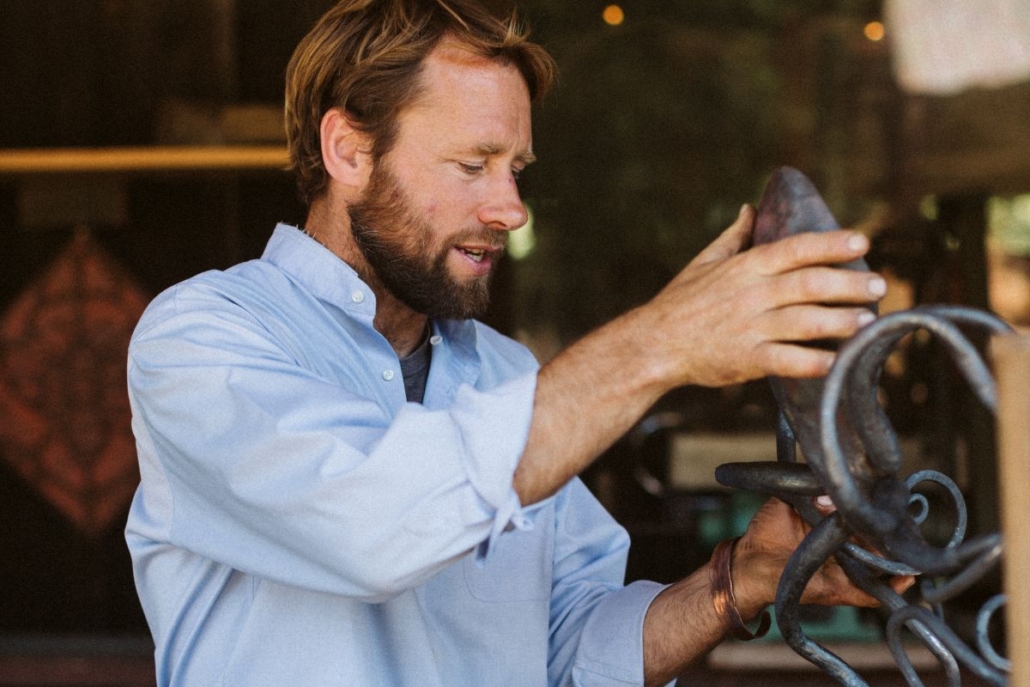
Zackarya’s thought-provoking work incorporates materials that would otherwise be cast aside. It has mystical elements. His pieces spark a sense of imagination, drawing the eye to minute details, while asking the mind to contemplate complex ideas — such as balancing, wind, and realms hardly seen.
While the bulk of his work is commissioned, Zackarya does offer several different pieces for sale, including planchas (squat, three-legged steel griddle designed for cooking over an open fire) and mammoth mobiles. The work is inspired by nature, with common motifs of ginkgo leaves, madrona trees, and marine creatures.
Learn more about Zackarya’s work and story by visiting his website. To experience Zackarya’s work and witness the magic of his studio, schedule an appointment or visit during the Orcas Artist’s Studio Tour.com on August 11-13th. He is represented by Must Gallery 520-991-9291.


